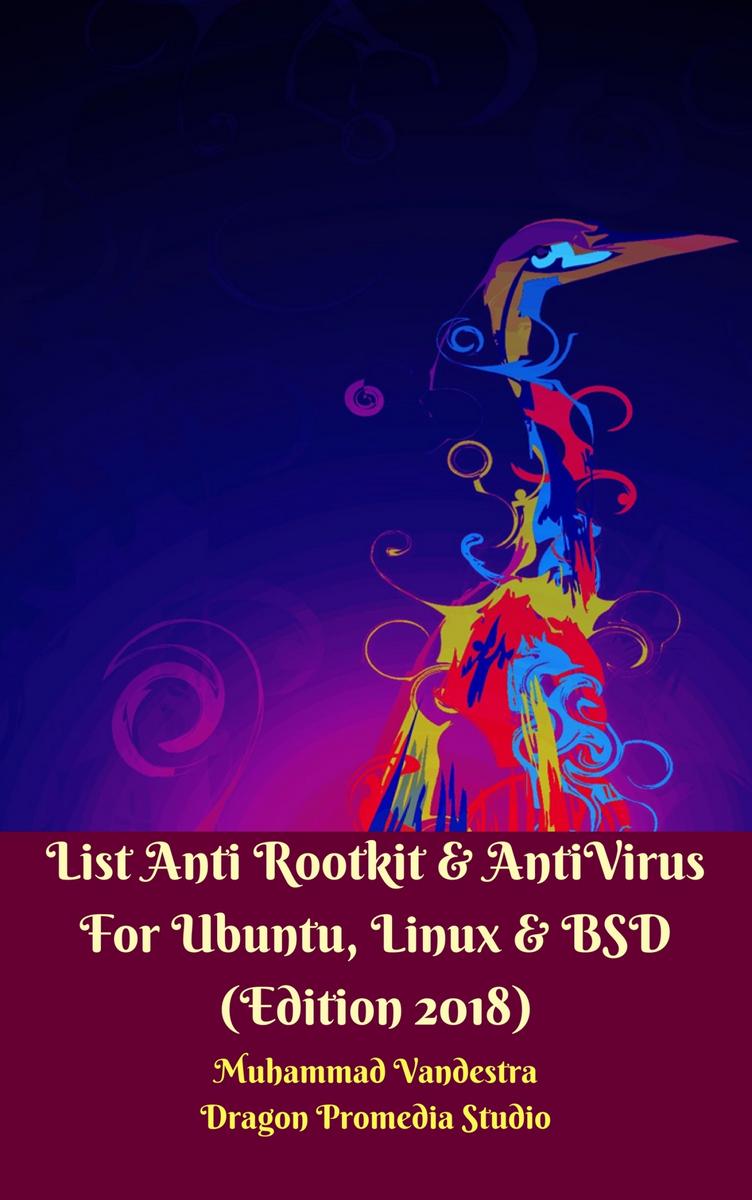
List Anti Rootkit & AntiVirus For Ubuntu, Linux & BSD: Edition 2018
¥16.27
List Anti Rootkit & AntiVirus For Ubuntu, Linux & BSD: Edition 2018

How To Jailbreak Amazon Fire Stick TV Alexa: How to Unlock Channels & Apps Step
¥40.79
How To Jailbreak Amazon Fire Stick TV Alexa: How to Unlock Channels & Apps Step by Step Guide
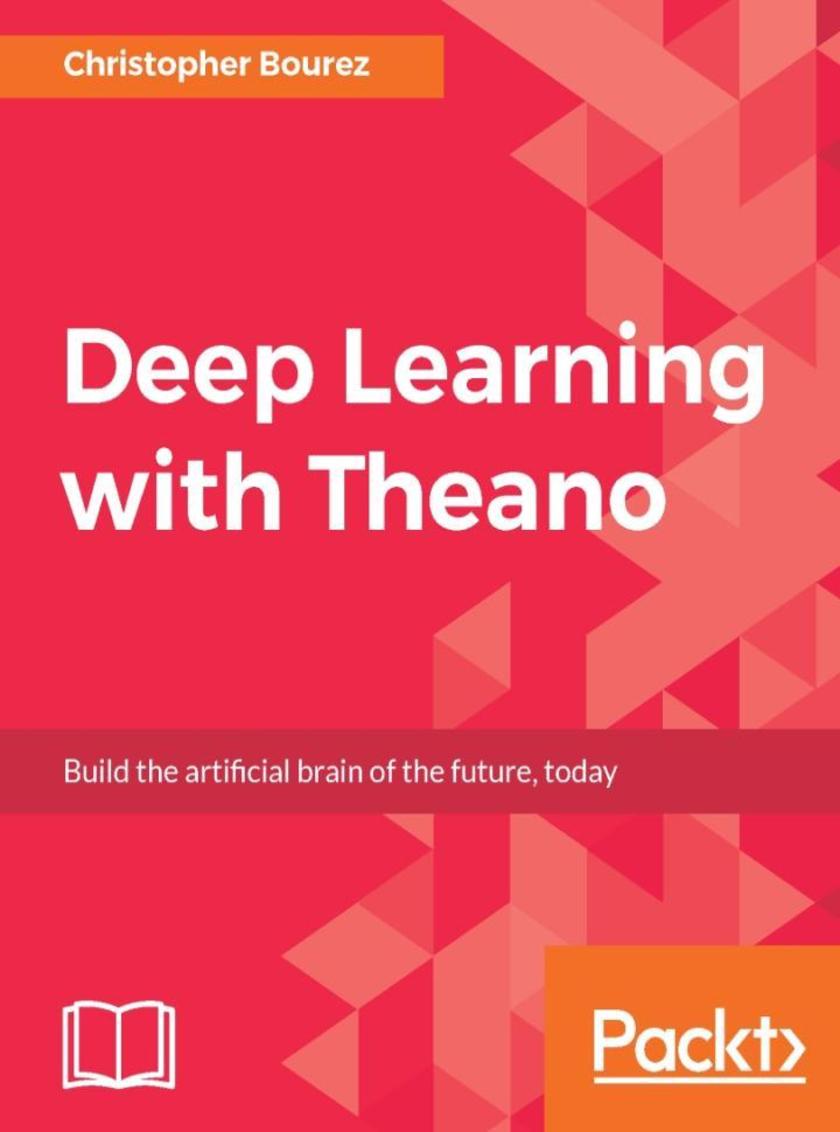
Deep Learning with Theano
¥80.65
Develop deep neural networks in Theano with practical code examples for image classification, machine translation, reinforcement agents, or generative models. About This Book ? Learn Theano basics and evaluate your mathematical expressions faster and in an efficient manner ? Learn the design patterns of deep neural architectures to build efficient and powerful networks on your datasets ? Apply your knowledge to concrete fields such as image classification, object detection, chatbots, machine translation, reinforcement agents, or generative models. Who This Book Is For This book is indented to provide a full overview of deep learning. From the beginner in deep learning and artificial intelligence, to the data scientist who wants to become familiar with Theano and its supporting libraries, or have an extended understanding of deep neural nets. Some basic skills in Python programming and computer science will help, as well as skills in elementary algebra and calculus. What You Will Learn ? Get familiar with Theano and deep learning ? Provide examples in supervised, unsupervised, generative, or reinforcement learning. ? Discover the main principles for designing efficient deep learning nets: convolutions, residual connections, and recurrent connections. ? Use Theano on real-world computer vision datasets, such as for digit classification and image classification. ? Extend the use of Theano to natural language processing tasks, for chatbots or machine translation ? Cover artificial intelligence-driven strategies to enable a robot to solve games or learn from an environment ? Generate synthetic data that looks real with generative modeling ? Become familiar with Lasagne and Keras, two frameworks built on top of Theano In Detail This book offers a complete overview of Deep Learning with Theano, a Python-based library that makes optimizing numerical expressions and deep learning models easy on CPU or GPU. The book provides some practical code examples that help the beginner understand how easy it is to build complex neural networks, while more experimented data scientists will appreciate the reach of the book, addressing supervised and unsupervised learning, generative models, reinforcement learning in the fields of image recognition, natural language processing, or game strategy. The book also discusses image recognition tasks that range from simple digit recognition, image classification, object localization, image segmentation, to image captioning. Natural language processing examples include text generation, chatbots, machine translation, and question answering. The last example deals with generating random data that looks real and solving games such as in the Open-AI gym. At the end, this book sums up the best -performing nets for each task. While early research results were based on deep stacks of neural layers, in particular, convolutional layers, the book presents the principles that improved the efficiency of these architectures, in order to help the reader build new custom nets. Style and approach It is an easy-to-follow example book that teaches you how to perform fast, efficient computations in Python. Starting with the very basics-NumPy, installing Theano, this book will take you to the smooth journey of implementing Theano for advanced computations for machine learning and deep learning.

PowerShell for Office 365
¥71.93
Learn the art of leveraging PowerShell to automate Office 365 repetitive tasks About This Book ? Master the fundamentals of PowerShell to automate Office 365 tasks. ? Easily administer scenarios such as user management, reporting, cloud services, and many more. ? A fast-paced guide that leverages PowerShell commands to increase your productivity. Who This Book Is For The book is aimed at sys admins who are administering office 365 tasks and looking forward to automate the manual tasks. They have no knowledge about PowerShell however basic understanding of PowerShell would be advantageous. What You Will Learn ? Understand the benefits of *ing and automation and get started using Powershell with Office 365 ? Explore various PowerShell packages and permissions required to manage Office 365 through PowerShell ? Create, manage, and remove Office 365 accounts and licenses using PowerShell and the Azure AD ? Learn about using powershell on other platforms and how to use Office 365 APIs through remoting ? Work with Exchange Online and SharePoint Online using PowerShell ? Automate your tasks and build easy-to-read reports using PowerShell In Detail While most common administrative tasks are available via the Office 365 admin center, many IT professionals are unaware of the real power that is available to them below the surface. This book aims to educate readers on how learning PowerShell for Office 365 can simplify repetitive and complex administrative tasks, and enable greater control than is available on the surface. The book starts by teaching readers how to access Office 365 through PowerShell and then explains the PowerShell fundamentals required for automating Office 365 tasks. You will then walk through common administrative cmdlets to manage accounts, licensing, and other scenarios such as automating the importing of multiple users,assigning licenses in Office 365, distribution groups, passwords, and so on. Using practical examples, you will learn to enhance your current functionality by working with Exchange Online, and SharePoint Online using PowerShell. Finally, the book will help you effectively manage complex and repetitive tasks (such as license and account management) and build productive reports. By the end of the book, you will have automated major repetitive tasks in Office 365 using PowerShell. Style and approach This step by step guide focuses on teaching the fundamentals of working with PowerShell for Office 365. It covers practical usage examples such as managing user accounts, licensing, and administering common Office 365 services. You will be able to leverage the processes laid out in the book so that you can move forward and explore other less common administrative tasks or functions.
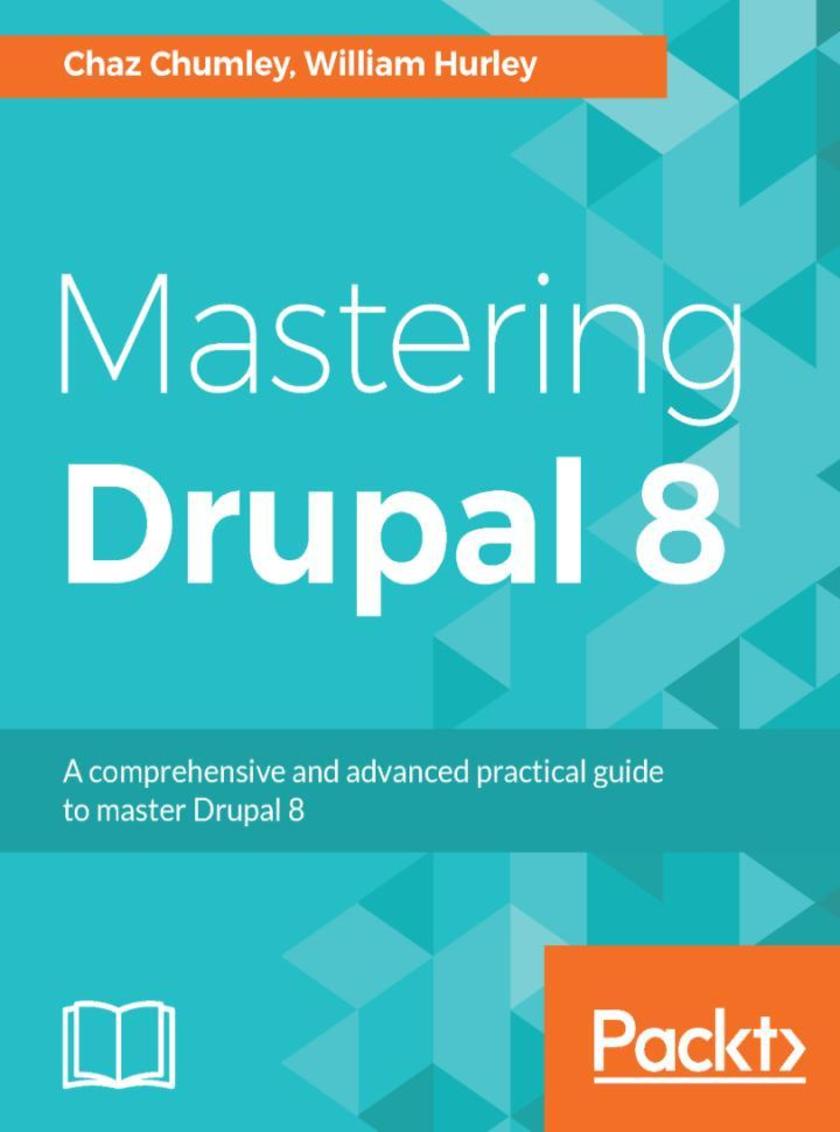
Mastering Drupal 8
¥90.46
Mastering Drupal can lead to a mighty website - discover what Drupal 8 can really do with hidden techniques, best practices, and more! About This Book ? The most up-to-date advanced practical guide on Drupal 8 with an in-depth look at all the advanced new features such as authoring, HTML markup, built-in web services, and more ? If you are looking to dive deep into Drupal 8 and create industry-standard web apps, then this is the ideal book for you ? All the code and examples are explained in great detail to help you in the development process Who This Book Is For This book is ideally suited to web developers, designers, and web administrators who want to dive deep into Drupal. Previous experience with Drupal is a must to unleash the full potential of this book. What You Will Learn ? Discover how to better manage content using custom blocks and views ? Display content in multiple ways, taking advantage of display modes ? Create custom modules with YAML and Symfony 2 ? Easily translate content using the new multilingual capabilities ? Use RESTful services and JavaScript frameworks to build headless websites ? Manage Drupal configuration from one server to another easily In Detail Drupal is an open source content management system trusted by governments and organizations around the globe to run their websites. It brings with it extensive content authoring tools, reliable performance, and a proven track record of security. The community of more than 1,000,000 developers, designers, editors, and others have developed and maintained a wealth of modules, themes, and other add-ons to help you build a dynamic web experience. Drupal 8 is the latest release of the Drupal built on the Symfony2 framework. This is the largest change to the Drupal project in its history. The entire API of Drupal has been rebuilt using Symfony and everything from the administrative UI to themes to custom module development has been affected. This book will cover everything you need to plan and build a complete website using Drupal 8. It will provide a clear and concise walkthrough of the more than 200 new features and improvements introduced in Drupal core. In this book, you will learn advanced site building techniques, create and modify themes using Twig, create custom modules using the new Drupal API, explore the new REST and Multilingual functionality, import, and export Configuration, and learn how to migrate from earlier versions of Drupal. Style and approach This book takes a practical approach with equal emphasis on examples and illustrative screenshots.
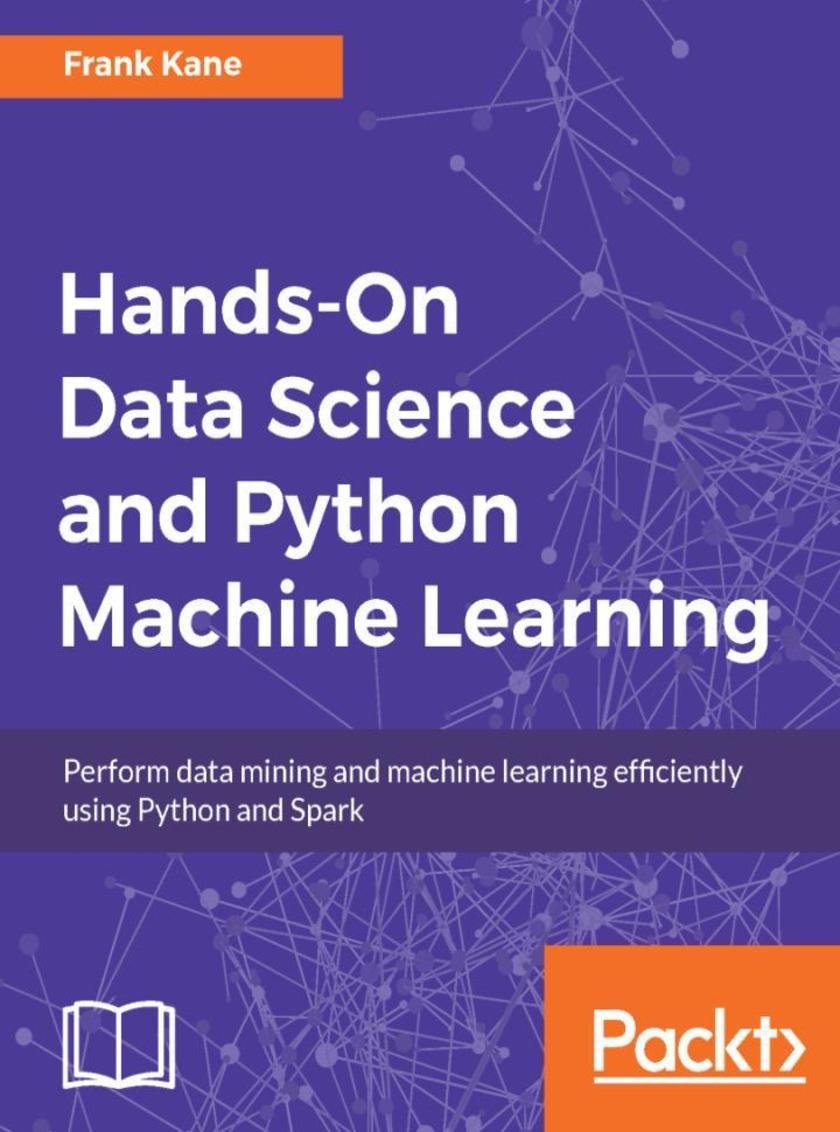
Hands-On Data Science and Python Machine Learning
¥71.93
This book covers the fundamentals of machine learning with Python in a concise and dynamic manner. It covers data mining and large-scale machine learning using Apache Spark. About This Book ? Take your first steps in the world of data science by understanding the tools and techniques of data analysis ? Train efficient Machine Learning models in Python using the supervised and unsupervised learning methods ? Learn how to use Apache Spark for processing Big Data efficiently Who This Book Is For If you are a budding data scientist or a data analyst who wants to analyze and gain actionable insights from data using Python, this book is for you. Programmers with some experience in Python who want to enter the lucrative world of Data Science will also find this book to be very useful, but you don't need to be an expert Python coder or mathematician to get the most from this book. What You Will Learn ? Learn how to clean your data and ready it for analysis ? Implement the popular clustering and regression methods in Python ? Train efficient machine learning models using decision trees and random forests ? Visualize the results of your analysis using Python’s Matplotlib library ? Use Apache Spark’s MLlib package to perform machine learning on large datasets In Detail Join Frank Kane, who worked on Amazon and IMDb’s machine learning algorithms, as he guides you on your first steps into the world of data science. Hands-On Data Science and Python Machine Learning gives you the tools that you need to understand and explore the core topics in the field, and the confidence and practice to build and analyze your own machine learning models. With the help of interesting and easy-to-follow practical examples, Frank Kane explains potentially complex topics such as Bayesian methods and K-means clustering in a way that anybody can understand them. Based on Frank’s successful data science course, Hands-On Data Science and Python Machine Learning empowers you to conduct data analysis and perform efficient machine learning using Python. Let Frank help you unearth the value in your data using the various data mining and data analysis techniques available in Python, and to develop efficient predictive models to predict future results. You will also learn how to perform large-scale machine learning on Big Data using Apache Spark. The book covers preparing your data for analysis, training machine learning models, and visualizing the final data analysis. Style and approach This comprehensive book is a perfect blend of theory and hands-on code examples in Python which can be used for your reference at any time.

Hands-On Deep Learning with TensorFlow
¥63.21
This book is your guide to exploring the possibilities in the field of deep learning, making use of Google's TensorFlow. You will learn about convolutional neural networks, and logistic regression while training models for deep learning to gain key insights into your data. About This Book ? Explore various possibilities with deep learning and gain amazing insights from data using Google’s brainchild-- TensorFlow ? Want to learn what more can be done with deep learning? Explore various neural networks with the help of this comprehensive guide ? Rich in concepts, advanced guide on deep learning that will give you background to innovate in your environment Who This Book Is For If you are a data scientist who performs machine learning on a regular basis, are familiar with deep neural networks, and now want to gain expertise in working with convoluted neural networks, then this book is for you. Some familiarity with C++ or Python is assumed. What You Will Learn ? Set up your computing environment and install TensorFlow ? Build simple TensorFlow graphs for everyday computations ? Apply logistic regression for classification with TensorFlow ? Design and train a multilayer neural network with TensorFlow ? Intuitively understand convolutional neural networks for image recognition ? Bootstrap a neural network from simple to more accurate models ? See how to use TensorFlow with other types of networks ? Program networks with SciKit-Flow, a high-level interface to TensorFlow In Detail Dan Van Boxel’s Deep Learning with TensorFlow is based on Dan’s best-selling TensorFlow video course. With deep learning going mainstream, making sense of data and getting accurate results using deep networks is possible. Dan Van Boxel will be your guide to exploring the possibilities with deep learning; he will enable you to understand data like never before. With the efficiency and simplicity of TensorFlow, you will be able to process your data and gain insights that will change how you look at data. With Dan’s guidance, you will dig deeper into the hidden layers of abstraction using raw data. Dan then shows you various complex algorithms for deep learning and various examples that use these deep neural networks. You will also learn how to train your machine to craft new features to make sense of deeper layers of data. In this book, Dan shares his knowledge across topics such as logistic regression, convolutional neural networks, recurrent neural networks, training deep networks, and high level interfaces. With the help of novel practical examples, you will become an ace at advanced multilayer networks, image recognition, and beyond. Style and Approach This book is your go-to guide to becoming a deep learning expert in your organization. Dan helps you evaluate common and not-so-common deep neural networks with the help of insightful examples that you can relate to, and show how they can be exploited in the real world with complex raw data.
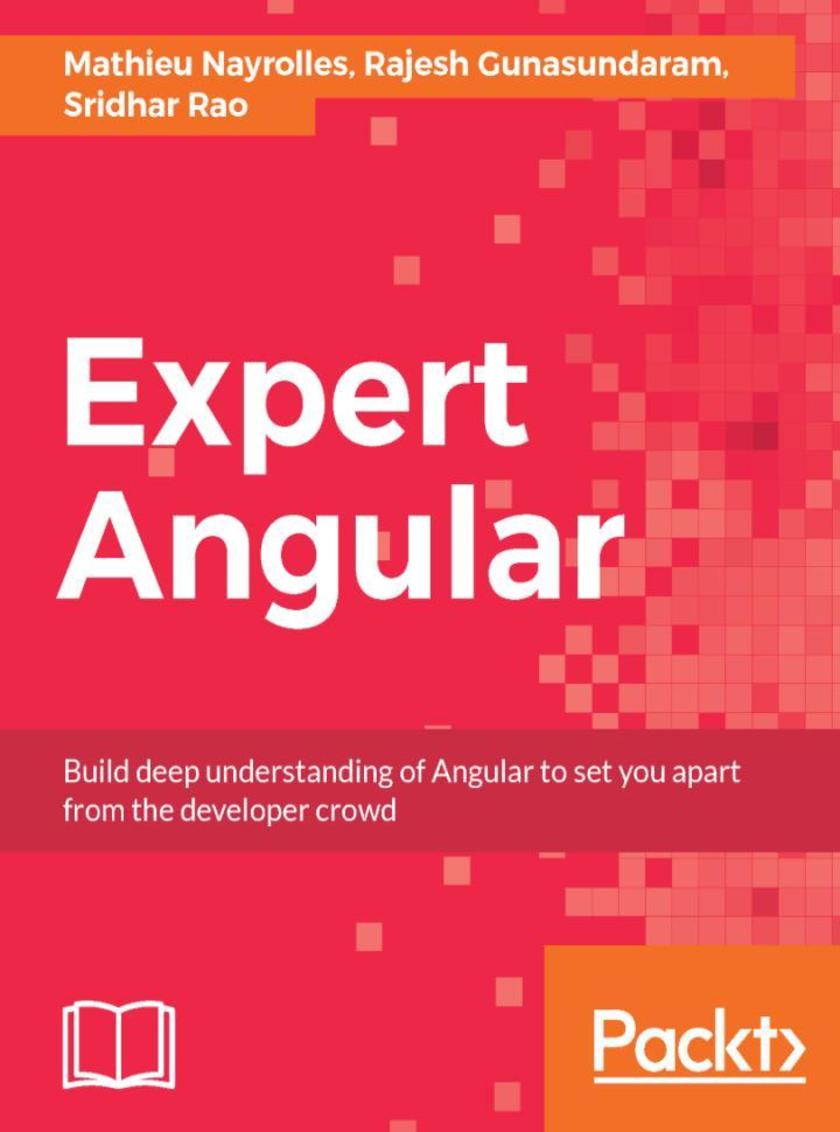
Expert Angular
¥90.46
Learn everything you need to build highly scalable, robust web applications using Angular release 4 About This Book ? Apply best practices and design patterns to achieve higher scalability in your Angular applications ? Understand the latest features of Angular and create your own components ? Get acquainted with powerful, advanced techniques in Angular to build professional web applications Who This Book Is For This book is for JavaScript developers with some prior exposure to Angular, at least through basic examples. We assume that you’ve got working knowledge of HTML, CSS, and JavaScript. What You Will Learn ? Implement asynchronous programming using Angular ? Beautify your application with the UI components built to the material design specification ? Secure your web application from unauthorized users ? Create complex forms, taking full advantage of 2-way data binding ? Test your Angular applications using the Jasmine and Protractor frameworks for better efficiency ? Learn how to integrate Angular with Bootstrap to create compelling web applications ? Use Angular built-in classes to apply animation in your app In Detail Got some experience of Angular under your belt? Want to learn everything about using advanced features for developing websites? This book is everything you need for the deep understanding of Angular that will set you apart from the developer crowd. Angular has introduced a new way to build applications. Creating complex and rich web applications, with a lighter resource footprint, has never been easier or faster. Angular is now at release 4, with significant changes through previous versions. This book has been written and tested for Angular release 4. Angular is a mature technology, and you'll likely have applications built with earlier versions. This book starts by showing you best practices and approaches to migrating your existing Angular applications so that you can be immediately up-to-date. You will take an in-depth look at components and see how to control the user journey in your applications by implementing routing and navigation. You will learn how to work with asynchronous programming by using Observables. To easily build applications that look great, you will learn all about template syntax and how to beautify applications with Material Design. Mastering forms and data binding will further speed up your application development time. Learning about managing services and animations will help you to progressively enhance your applications. Next you’ll use native directives to integrate Bootstrap with Angular. You will see the best ways to test your application with the leading options such as Jasmine and Protractor. At the end of the book, you’ll learn how to apply design patterns in Angular, and see the benefits they will bring to your development. Style and approach This book provides comprehensive coverage of all aspects of development with Angular. You will learn about all the most powerful Angular concepts, with examples and best practices. This book is everything you need for the deep understanding of Angular that will set you apart from the developer crowd.
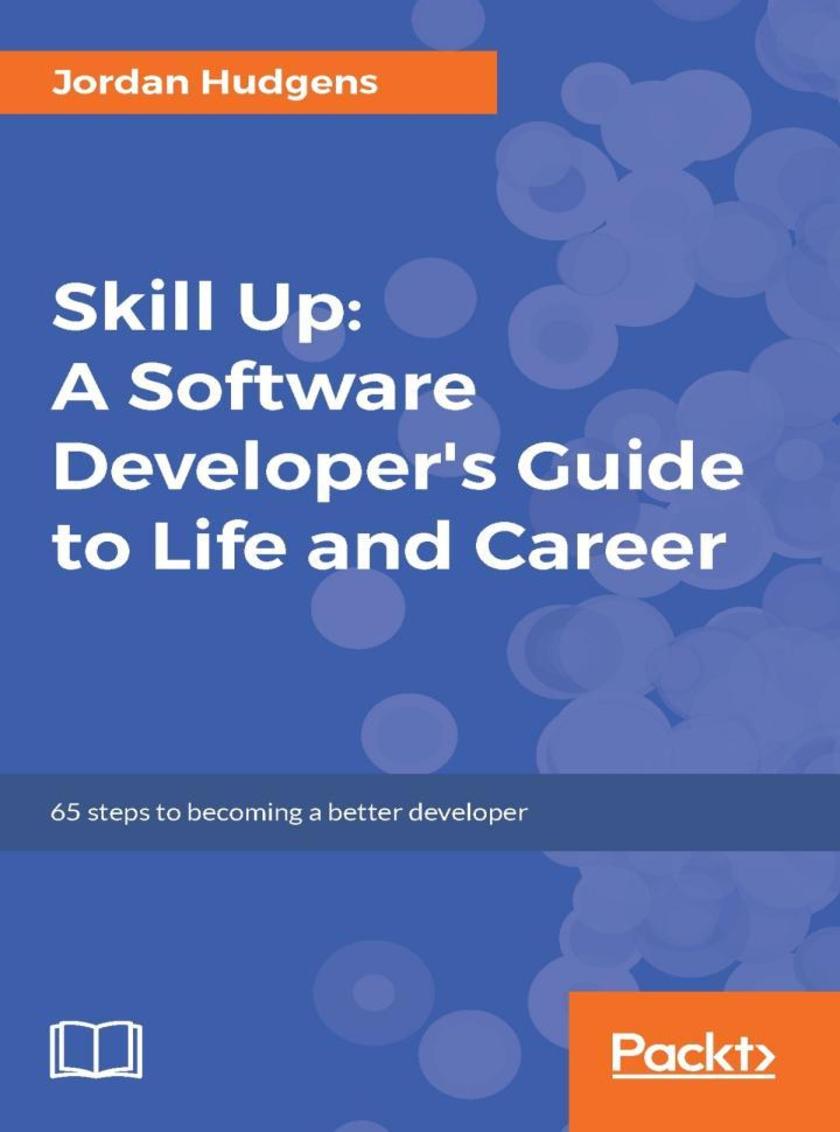
Skill Up: A Software Developer's Guide to Life and Career
¥71.93
This unique book provides you with a wealth of tips, tricks, best practices, and answers to the day-to-day questions that programmers face in their careers. It is split into three parts: Coder Skills, Freelancer Skills, and Career Skills, providing the knowledge you need to get ahead in programming. About This Book ? Over 50 essays with practical advice on improving your programming career ? Practical focus gives solutions to common problems, and methods to become a better coder ? Includes advice for existing programmers and those wanting to begin a career in programming Who This Book Is For This book is useful for programmers of any ability or discipline. It has advice for those thinking about beginning a career in programming, those already working as a fully employed programmer, and for those working as freelance developers. What You Will Learn ? Improve your soft skills to become a better and happier coder ? Learn to be a better developer ? Grow your freelance development business ? Improve your development career ? Learn the best approaches to breaking down complex topics ? Have the confidence to charge what you're worth as a freelancer ? Succeed in developer job interviews In Detail This is an all-purpose toolkit for your programming career. It has been built by Jordan Hudgens over a lifetime of coding and teaching coding. It helps you identify the key questions and stumbling blocks that programmers encounter, and gives you the answers to them! It is a comprehensive guide containing more than 50 insights that you can use to improve your work, and to give advice in your career. The book is split up into three topic areas: Coder Skills, Freelancer Skills, and Career Skills, each containing a wealth of practical advice. Coder Skills contains advice for people starting out, or those who are already working in a programming role but want to improve their skills. It includes such subjects as: how to study and understand complex topics, and getting past skill plateaus when learning new languages. Freelancer Skills contains advice for developers working as freelancers or with freelancers. It includes such subjects as: knowing when to fire a client, and tips for taking over legacy applications. Career Skills contains advice for building a successful career as a developer. It includes such subjects as: how to improve your programming techniques, and interview guides and developer salary negotiation strategies. Style and approach This unique book provides over 50 insightful essays full of practical advice for improving your programming career. The book is split into three broad sections covering different aspects of a developer's career. Each essay is self-contained and can be read individually, or in chunks.
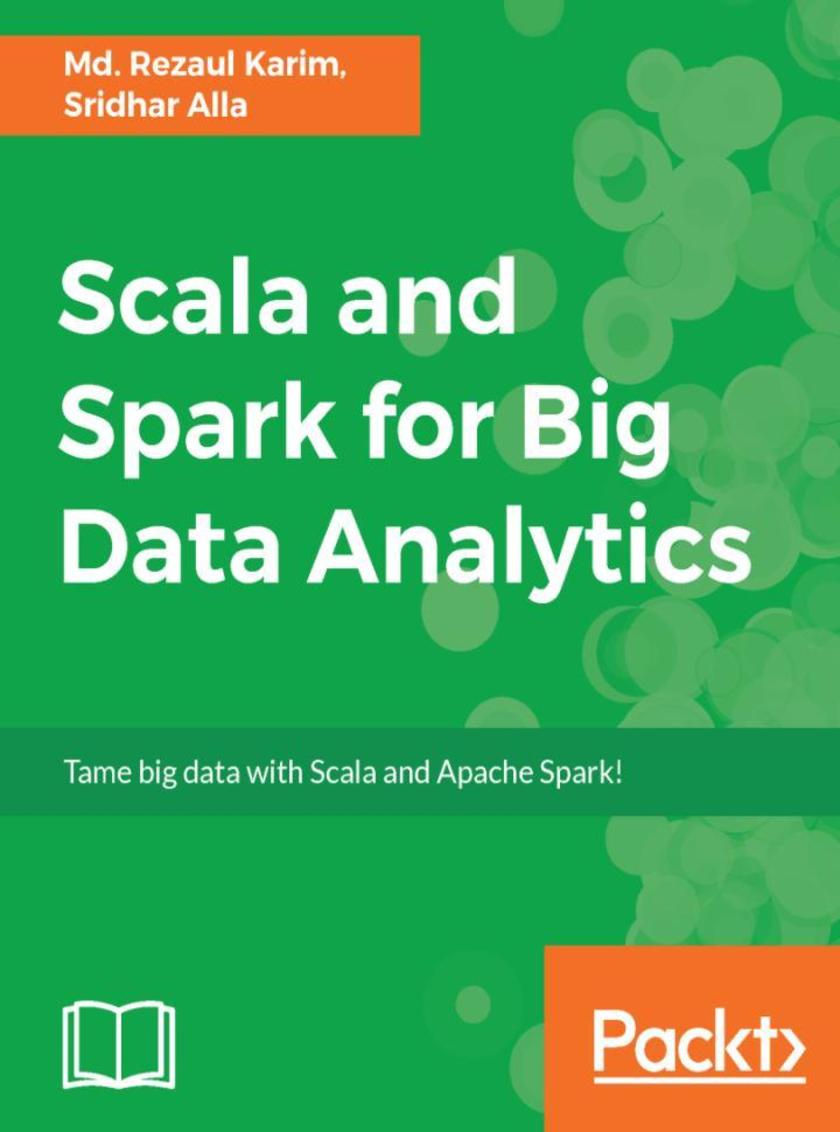
Scala and Spark for Big Data Analytics
¥116.62
Harness the power of Scala to program Spark and analyze tonnes of data in the blink of an eye! About This Book ? Learn Scala’s sophisticated type system that combines Functional Programming and object-oriented concepts ? Work on a wide array of applications, from simple batch jobs to stream processing and machine learning ? Explore the most common as well as some complex use-cases to perform large-scale data analysis with Spark Who This Book Is For Anyone who wishes to learn how to perform data analysis by harnessing the power of Spark will find this book extremely useful. No knowledge of Spark or Scala is assumed, although prior programming experience (especially with other JVM languages) will be useful to pick up concepts quicker. What You Will Learn ? Understand object-oriented & functional programming concepts of Scala ? In-depth understanding of Scala collection APIs ? Work with RDD and DataFrame to learn Spark’s core abstractions ? Analysing structured and unstructured data using SparkSQL and GraphX ? Scalable and fault-tolerant streaming application development using Spark structured streaming ? Learn machine-learning best practices for classification, regression, dimensionality reduction, and recommendation system to build predictive models with widely used algorithms in Spark MLlib & ML ? Build clustering models to cluster a vast amount of data ? Understand tuning, debugging, and monitoring Spark applications ? Deploy Spark applications on real clusters in Standalone, Mesos, and YARN In Detail Scala has been observing wide adoption over the past few years, especially in the field of data science and analytics. Spark, built on Scala, has gained a lot of recognition and is being used widely in productions. Thus, if you want to leverage the power of Scala and Spark to make sense of big data, this book is for you. The first part introduces you to Scala, helping you understand the object-oriented and functional programming concepts needed for Spark application development. It then moves on to Spark to cover the basic abstractions using RDD and DataFrame. This will help you develop scalable and fault-tolerant streaming applications by analyzing structured and unstructured data using SparkSQL, GraphX, and Spark structured streaming. Finally, the book moves on to some advanced topics, such as monitoring, configuration, debugging, testing, and deployment. You will also learn how to develop Spark applications using SparkR and PySpark APIs, interactive data analytics using Zeppelin, and in-memory data processing with Alluxio. By the end of this book, you will have a thorough understanding of Spark, and you will be able to perform full-stack data analytics with a feel that no amount of data is too big. Style and approach Filled with practical examples and use cases, this book will hot only help you get up and running with Spark, but will also take you farther down the road to becoming a data scientist.
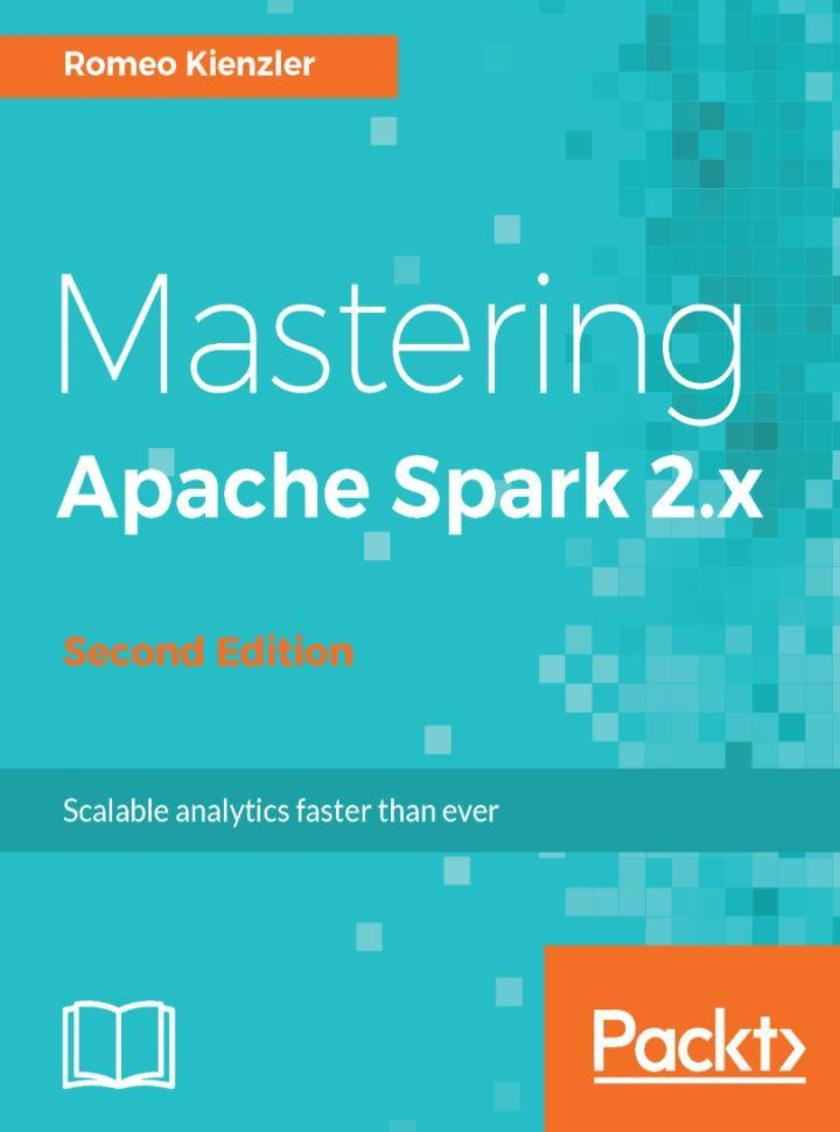
Mastering Apache Spark 2.x - Second Edition
¥90.46
Advanced analytics on your Big Data with latest Apache Spark 2.x About This Book ? An advanced guide with a combination of instructions and practical examples to extend the most up-to date Spark functionalities. ? Extend your data processing capabilities to process huge chunk of data in minimum time using advanced concepts in Spark. ? Master the art of real-time processing with the help of Apache Spark 2.x Who This Book Is For If you are a developer with some experience with Spark and want to strengthen your knowledge of how to get around in the world of Spark, then this book is ideal for you. Basic knowledge of Linux, Hadoop and Spark is assumed. Reasonable knowledge of Scala is expected. What You Will Learn ? Examine Advanced Machine Learning and DeepLearning with MLlib, SparkML, SystemML, H2O and DeepLearning4J ? Study highly optimised unified batch and real-time data processing using SparkSQL and Structured Streaming ? Evaluate large-scale Graph Processing and Analysis using GraphX and GraphFrames ? Apply Apache Spark in Elastic deployments using Jupyter and Zeppelin Notebooks, Docker, Kubernetes and the IBM Cloud ? Understand internal details of cost based optimizers used in Catalyst, SystemML and GraphFrames ? Learn how specific parameter settings affect overall performance of an Apache Spark cluster ? Leverage Scala, R and python for your data science projects In Detail Apache Spark is an in-memory cluster-based parallel processing system that provides a wide range of functionalities such as graph processing, machine learning, stream processing, and SQL. This book aims to take your knowledge of Spark to the next level by teaching you how to expand Spark’s functionality and implement your data flows and machine/deep learning programs on top of the platform. The book commences with an overview of the Spark ecosystem. It will introduce you to Project Tungsten and Catalyst, two of the major advancements of Apache Spark 2.x. You will understand how memory management and binary processing, cache-aware computation, and code generation are used to speed things up dramatically. The book extends to show how to incorporate H20, SystemML, and Deeplearning4j for machine learning, and Jupyter Notebooks and Kubernetes/Docker for cloud-based Spark. During the course of the book, you will learn about the latest enhancements to Apache Spark 2.x, such as interactive querying of live data and unifying DataFrames and Datasets. You will also learn about the updates on the APIs and how DataFrames and Datasets affect SQL, machine learning, graph processing, and streaming. You will learn to use Spark as a big data operating system, understand how to implement advanced analytics on the new APIs, and explore how easy it is to use Spark in day-to-day tasks. Style and approach This book is an extensive guide to Apache Spark modules and tools and shows how Spark's functionality can be extended for real-time processing and storage with worked examples.
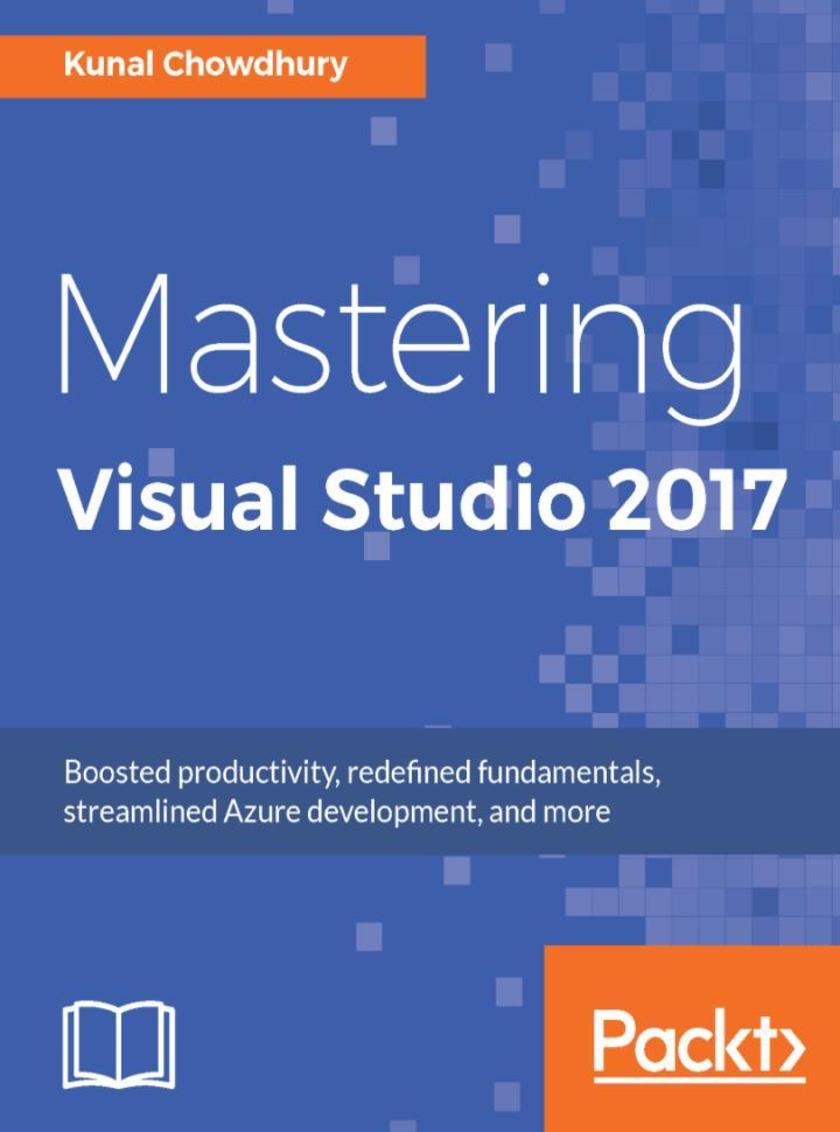
Mastering Visual Studio 2017
¥90.46
A guide to mastering Visual Studio 2017 About This Book ? Focus on coding with the new, improved, and powerful tools of VS 2017 ? Master improved debugging and unit testing support capabilities ? Accelerate cloud development with the built-in Azure tools Who This Book Is For .NET Developers who would like to master the new features of VS 2017, and would like to delve into newer areas such as cloud computing, would benefit from this book. Basic knowledge of previous versions of Visual Studio is assumed. What You Will Learn ? Learn what's new in the Visual Studio 2017 IDE, C# 7.0, and how it will help developers to improve their productivity ? Learn the workloads and components of the new installation wizard and how to use the online and offline installer ? Build stunning Windows apps using Windows Presentation Foundation (WPF) and Universal Windows Platform (UWP) tools ? Get familiar with .NET Core and learn how to build apps targeting this new framework ? Explore everything about NuGet packages ? Debug and test your applications using Visual Studio 2017 ? Accelerate cloud development with Microsoft Azure ? Integrate Visual Studio with most popular source control repositories, such as TFS and GitHub In Detail Visual Studio 2017 is the all-new IDE released by Microsoft for developers, targeting Microsoft and other platforms to build stunning Windows and web apps. Learning how to effectively use this technology can enhance your productivity while simplifying your most common tasks, allowing you more time to focus on your project. With this book, you will learn not only what VS2017 offers, but also what it takes to put it to work for your projects. Visual Studio 2017 is packed with improvements that increase productivity, and this book will get you started with the new features introduced in Visual Studio 2017 IDE and C# 7.0. Next, you will learn to use XAML tools to build classic WPF apps, and UWP tools to build apps targeting Windows 10. Later, you will learn about .NET Core and then explore NuGet, the package manager for the Microsoft development platform. Then, you will familiarize yourself with the debugging and live unit testing techniques that comes with the IDE. Finally, you'll adapt Microsoft's implementation of cloud computing with Azure, and the Visual Studio integration with Source Control repositories. Style and approach This comprehensive guide covers the advanced features of Visual Studio 2017, and communicates them through a practical approach to explore the underlying concepts of how, when, and why to use it.

Python Social Media Analytics
¥90.46
Leverage the power of Python to collect, process, and mine deep insights from social media data About This Book ? Acquire data from various social media platforms such as Facebook, Twitter, YouTube, GitHub, and more ? Analyze and extract actionable insights from your social data using various Python tools ? A highly practical guide to conducting efficient social media analytics at scale Who This Book Is For If you are a programmer or a data analyst familiar with the Python programming language and want to perform analyses of your social data to acquire valuable business insights, this book is for you. The book does not assume any prior knowledge of any data analysis tool or process. What You Will Learn ? Understand the basics of social media mining ? Use PyMongo to clean, store, and access data in MongoDB ? Understand user reactions and emotion detection on Facebook ? Perform Twitter sentiment analysis and entity recognition using Python ? Analyze video and campaign performance on YouTube ? Mine popular trends on GitHub and predict the next big technology ? Extract conversational topics on public internet forums ? Analyze user interests on Pinterest ? Perform large-scale social media analytics on the cloud In Detail Social Media platforms such as Facebook, Twitter, Forums, Pinterest, and YouTube have become part of everyday life in a big way. However, these complex and noisy data streams pose a potent challenge to everyone when it comes to harnessing them properly and benefiting from them. This book will introduce you to the concept of social media analytics, and how you can leverage its capabilities to empower your business. Right from acquiring data from various social networking sources such as Twitter, Facebook, YouTube, Pinterest, and social forums, you will see how to clean data and make it ready for analytical operations using various Python APIs. This book explains how to structure the clean data obtained and store in MongoDB using PyMongo. You will also perform web scraping and visualize data using Scrappy and Beautifulsoup. Finally, you will be introduced to different techniques to perform analytics at scale for your social data on the cloud, using Python and Spark. By the end of this book, you will be able to utilize the power of Python to gain valuable insights from social media data and use them to enhance your business processes. Style and approach This book follows a step-by-step approach to teach readers the concepts of social media analytics using the Python programming language. To explain various data analysis processes, real-world datasets are used wherever required.

Getting Started with Terraform - Second Edition
¥54.49
Build, Manage and Improve your infrastructure effortlessly. About This Book ? An up-to-date and comprehensive resource on Terraform that lets you quickly and efficiently launch your infrastructure ? Learn how to implement your infrastructure as code and make secure, effective changes to your infrastructure ? Learn to build multi-cloud fault-tolerant systems and simplify the management and orchestration of even the largest scale and most complex cloud infrastructures Who This Book Is For This book is for developers and operators who already have some exposure to working with infrastructure but want to improve their workflow and introduce infrastructure as a code practice. Knowledge of essential Amazon Web Services components (EC2, VPC, IAM) would help contextualize the examples provided. Basic understanding of Jenkins and Shell *s will be helpful for the chapters on the production usage of Terraform. What You Will Learn ? Understand what Infrastructure as Code (IaC) means and why it matters ? Install, configure, and deploy Terraform ? Take full control of your infrastructure in the form of code ? Manage complete infrastructure, starting with a single server and scaling beyond any limits ? Discover a great set of production-ready practices to manage infrastructure ? Set up CI/CD pipelines to test and deliver Terraform stacks ? Construct templates to simplify more complex provisioning tasks In Detail Terraform is a tool used to efficiently build, configure, and improve the production infrastructure. It can manage the existing infrastructure as well as create custom in-house solutions. This book shows you when and how to implement infrastructure as a code practices with Terraform. It covers everything necessary to set up the complete management of infrastructure with Terraform, starting with the basics of using providers and resources. It is a comprehensive guide that begins with very small infrastructure templates and takes you all the way to managing complex systems, all using concrete examples that evolve over the course of the book. The book ends with the complete workflow of managing a production infrastructure as code—this is achieved with the help of version control and continuous integration. The readers will also learn how to combine multiple providers in a single template and manage different code bases with many complex modules. It focuses on how to set up continuous integration for the infrastructure code. The readers will be able to use Terraform to build, change, and combine infrastructure safely and efficiently. Style and approach This book will help and guide you to implement Terraform in your infrastructure. The readers will start by working on very small infrastructure templates and then slowly move on to manage complex systems, all by using concrete examples that will evolve during the course of the book.
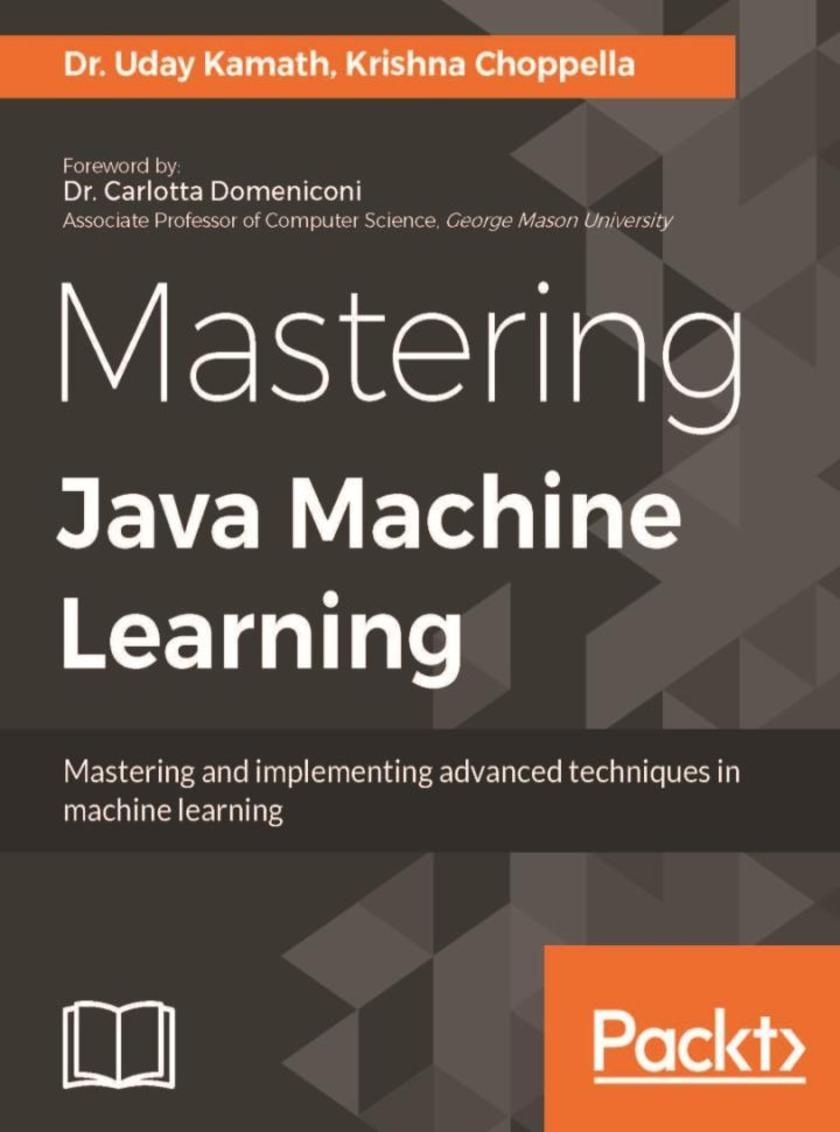
Mastering Java Machine Learning
¥99.18
Become an advanced practitioner with this progressive set of master classes on application-oriented machine learning About This Book ? Comprehensive coverage of key topics in machine learning with an emphasis on both the theoretical and practical aspects ? More than 15 open source Java tools in a wide range of techniques, with code and practical usage. ? More than 10 real-world case studies in machine learning highlighting techniques ranging from data ingestion up to analyzing the results of experiments, all preparing the user for the practical, real-world use of tools and data analysis. Who This Book Is For This book will appeal to anyone with a serious interest in topics in Data Science or those already working in related areas: ideally, intermediate-level data analysts and data scientists with experience in Java. Preferably, you will have experience with the fundamentals of machine learning and now have a desire to explore the area further, are up to grappling with the mathematical complexities of its algorithms, and you wish to learn the complete ins and outs of practical machine learning. What You Will Learn ? Master key Java machine learning libraries, and what kind of problem each can solve, with theory and practical guidance. ? Explore powerful techniques in each major category of machine learning such as classification, clustering, anomaly detection, graph modeling, and text mining. ? Apply machine learning to real-world data with methodologies, processes, applications, and analysis. ? Techniques and experiments developed around the latest specializations in machine learning, such as deep learning, stream data mining, and active and semi-supervised learning. ? Build high-performing, real-time, adaptive predictive models for batch- and stream-based big data learning using the latest tools and methodologies. ? Get a deeper understanding of technologies leading towards a more powerful AI applicable in various domains such as Security, Financial Crime, Internet of Things, social networking, and so on. In Detail Java is one of the main languages used by practicing data scientists; much of the Hadoop ecosystem is Java-based, and it is certainly the language that most production systems in Data Science are written in. If you know Java, Mastering Machine Learning with Java is your next step on the path to becoming an advanced practitioner in Data Science. This book aims to introduce you to an array of advanced techniques in machine learning, including classification, clustering, anomaly detection, stream learning, active learning, semi-supervised learning, probabilistic graph modeling, text mining, deep learning, and big data batch and stream machine learning. Accompanying each chapter are illustrative examples and real-world case studies that show how to apply the newly learned techniques using sound methodologies and the best Java-based tools available today. On completing this book, you will have an understanding of the tools and techniques for building powerful machine learning models to solve data science problems in just about any domain. Style and approach A practical guide to help you explore machine learning—and an array of Java-based tools and frameworks—with the help of practical examples and real-world use cases.
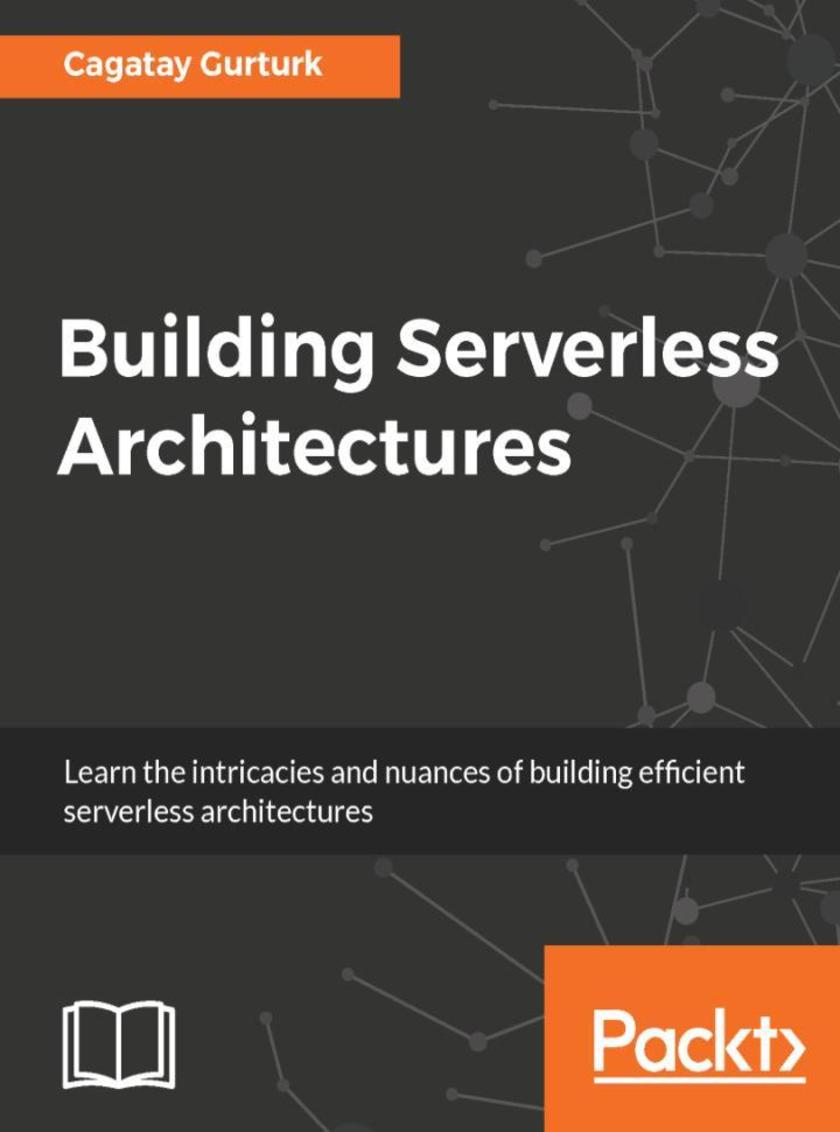
Building Serverless Architectures
¥80.65
Build scalable, reliable, and cost-effective applications with a serverless architecture About This Book ? Design a real-world serverless application from scratch ? Learn about AWS Lambda function and how to use Lambda functions to glue other AWS Services ? Use the Java programming language and well-known design patterns. Although Java is used for the examples in this book, the concept is applicable across all languages ? Learn to migrate your JAX-RS application to AWS Lambda and API Gateway Who This Book Is For This book is for developers and software architects who are interested in designing on the back end. Since the book uses Java to teach concepts, knowledge of Java is required. What You Will Learn ? Learn to form microservices from bigger Softwares ? Orchestrate and scale microservices ? Design and set up the data flow between cloud services and custom business logic ? Get to grips with cloud provider’s APIs, limitations, and known issues ? Migrate existing Java applications to a serverless architecture ? Acquire deployment strategies ? Build a highly available and scalable data persistence layer ? Unravel cost optimization techniques In Detail Over the past years, all kind of companies from start-ups to giant enterprises started their move to public cloud providers in order to save their costs and reduce the operation effort needed to keep their shops open. Now it is even possible to craft a complex software system consisting of many independent micro-functions that will run only when they are needed without needing to maintain individual servers. The focus of this book is to design serverless architectures, and weigh the advantages and disadvantages of this approach, along with decision factors to consider. You will learn how to design a serverless application, get to know that key points of services that serverless applications are based on, and known issues and solutions. The book addresses key challenges such as how to slice out the core functionality of the software to be distributed in different cloud services and cloud functions. It covers basic and advanced usage of these services, testing and securing the serverless software, automating deployment, and more. By the end of the book, you will be equipped with knowledge of new tools and techniques to keep up with this evolution in the IT industry. Style and approach The book takes a pragmatic approach, showing you all the examples you need to build efficient serverless applications.

Performance Testing with JMeter 3 - Third Edition
¥63.21
A practical guide to help you undertand the ability of Apache jMeter to load and performance test various server types in a more efficient way. About This Book ? Use jMeter to create and run tests to improve the performance of your webpages and applications ? Learn to build a test plan for your websites and analyze the results ? Unleash the power of various features and changes introduced in Apache jMeter 3.0 Who This Book Is For This book is for software professionals who want to understand and improve the performance of their applications with Apache jMeter. What You Will Learn ? See why performance testing is necessary and learn how to set up JMeter ? Record and test with JMeter ? Handle various form inputs in JMeter and parse results during testing ? Manage user sessions in web applications in the context of a JMeter test ? Monitor JMeter results in real time ? Perform distributed testing with JMeter ? Get acquainted with helpful tips and best practices for working with JMeter In Detail JMeter is a Java application designed to load and test performance for web application. JMeter extends to improve the functioning of various other static and dynamic resources. This book is a great starting point to learn about JMeter. It covers the new features introduced with JMeter 3 and enables you to dive deep into the new techniques needed for measuring your website performance. The book starts with the basics of performance testing and guides you through recording your first test scenario, before diving deeper into JMeter. You will also learn how to configure JMeter and browsers to help record test plans. Moving on, you will learn how to capture form submission in JMeter, dive into managing sessions with JMeter and see how to leverage some of the components provided by JMeter to handle web application HTTP sessions. You will also learn how JMeter can help monitor tests in real-time. Further, you will go in depth into distributed testing and see how to leverage the capabilities of JMeter to accomplish this. You will get acquainted with some tips and best practices with regard to performance testing. By the end of the book, you will have learned how to take full advantage of the real power behind Apache JMeter. Style and approach The book is a practical guide starting with introducing the readers to the importance of automated testing. It will then be a beginner’s journey from getting introduced to Apache jMeter to an in-detail discussion of more advanced features and possibilities with it.
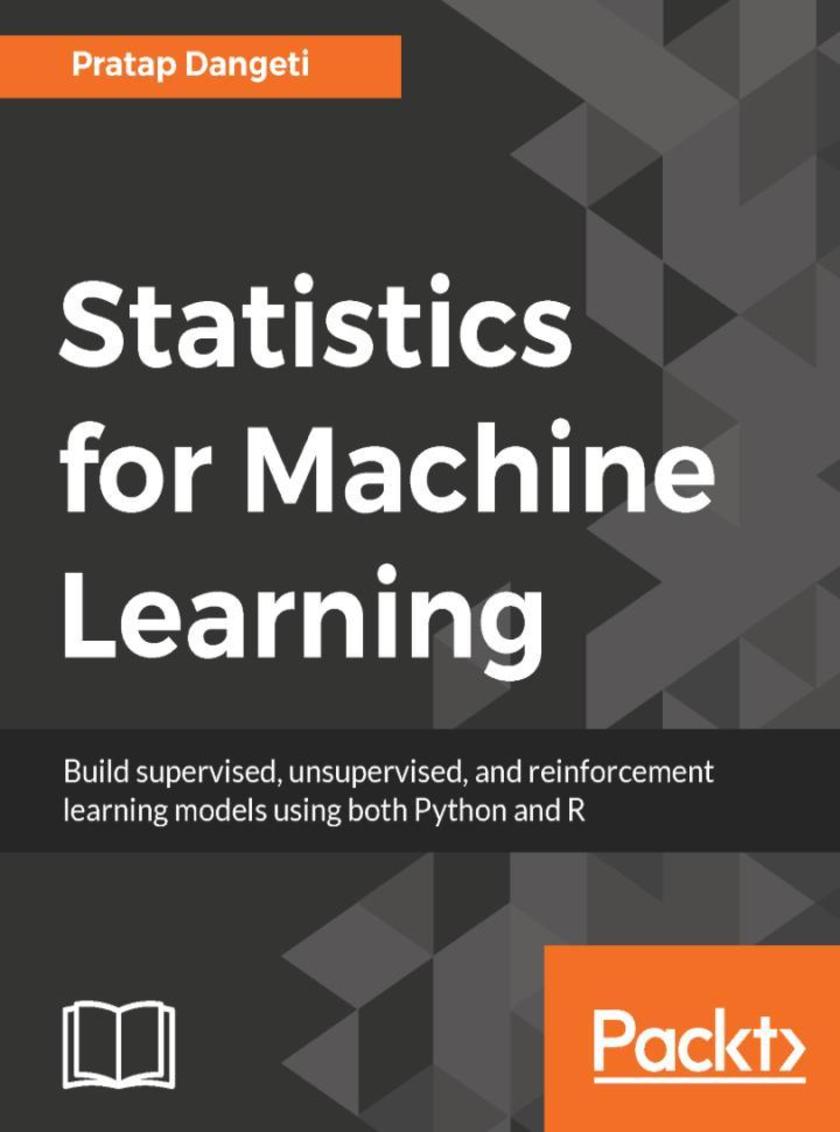
Statistics for Machine Learning
¥90.46
Build Machine Learning models with a sound statistical understanding. About This Book ? Learn about the statistics behind powerful predictive models with p-value, ANOVA, and F- statistics. ? Implement statistical computations programmatically for supervised and unsupervised learning through K-means clustering. ? Master the statistical aspect of Machine Learning with the help of this example-rich guide to R and Python. Who This Book Is For This book is intended for developers with little to no background in statistics, who want to implement Machine Learning in their systems. Some programming knowledge in R or Python will be useful. What You Will Learn ? Understand the Statistical and Machine Learning fundamentals necessary to build models ? Understand the major differences and parallels between the statistical way and the Machine Learning way to solve problems ? Learn how to prepare data and feed models by using the appropriate Machine Learning algorithms from the more-than-adequate R and Python packages ? Analyze the results and tune the model appropriately to your own predictive goals ? Understand the concepts of required statistics for Machine Learning ? Introduce yourself to necessary fundamentals required for building supervised & unsupervised deep learning models ? Learn reinforcement learning and its application in the field of artificial intelligence domain In Detail Complex statistics in Machine Learning worry a lot of developers. Knowing statistics helps you build strong Machine Learning models that are optimized for a given problem statement. This book will teach you all it takes to perform complex statistical computations required for Machine Learning. You will gain information on statistics behind supervised learning, unsupervised learning, reinforcement learning, and more. Understand the real-world examples that discuss the statistical side of Machine Learning and familiarize yourself with it. You will also design programs for performing tasks such as model, parameter fitting, regression, classification, density collection, and more. By the end of the book, you will have mastered the required statistics for Machine Learning and will be able to apply your new skills to any sort of industry problem. Style and approach This practical, step-by-step guide will give you an understanding of the Statistical and Machine Learning fundamentals you'll need to build models.
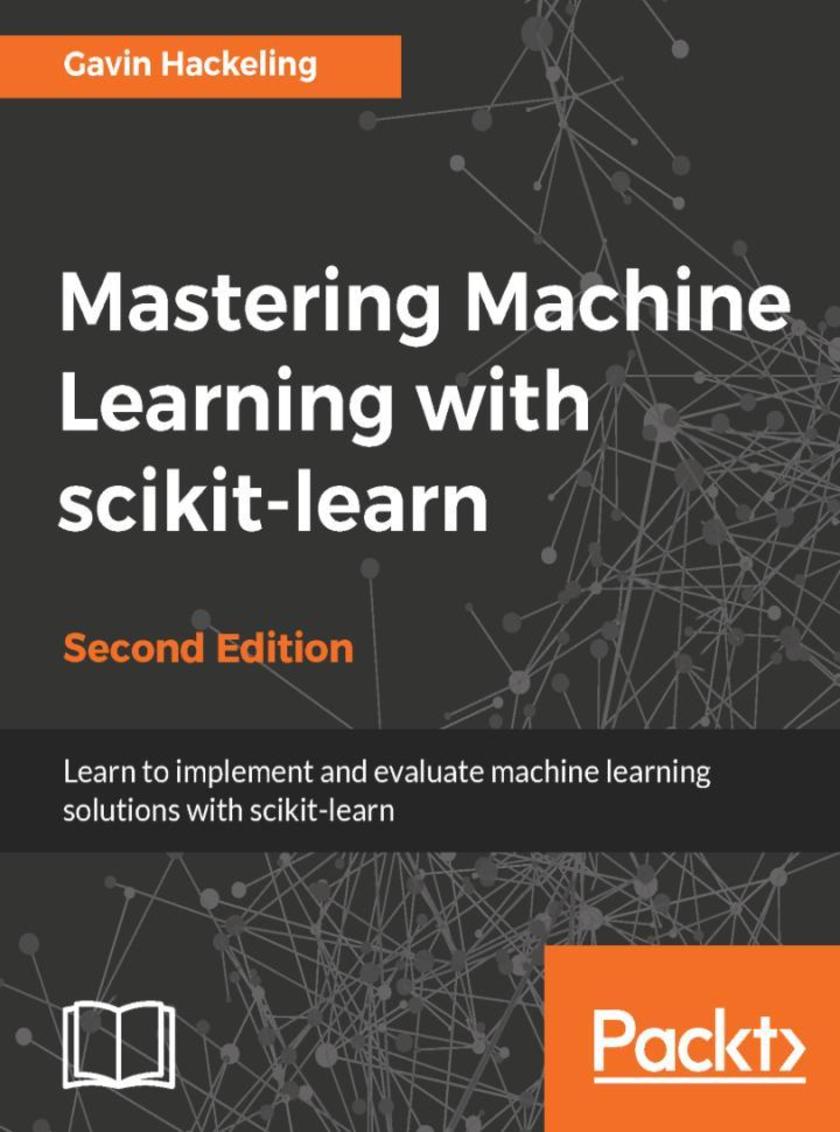
Mastering Machine Learning with scikit-learn - Second Edition
¥80.65
Use scikit-learn to apply machine learning to real-world problems About This Book ? Master popular machine learning models including k-nearest neighbors, random forests, logistic regression, k-means, naive Bayes, and artificial neural networks ? Learn how to build and evaluate performance of efficient models using scikit-learn ? Practical guide to master your basics and learn from real life applications of machine learning Who This Book Is For This book is intended for software engineers who want to understand how common machine learning algorithms work and develop an intuition for how to use them, and for data scientists who want to learn about the scikit-learn API. Familiarity with machine learning fundamentals and Python are helpful, but not required. What You Will Learn ? Review fundamental concepts such as bias and variance ? Extract features from categorical variables, text, and images ? Predict the values of continuous variables using linear regression and K Nearest Neighbors ? Classify documents and images using logistic regression and support vector machines ? Create ensembles of estimators using bagging and boosting techniques ? Discover hidden structures in data using K-Means clustering ? Evaluate the performance of machine learning systems in common tasks In Detail Machine learning is the buzzword bringing computer science and statistics together to build smart and efficient models. Using powerful algorithms and techniques offered by machine learning you can automate any analytical model. This book examines a variety of machine learning models including popular machine learning algorithms such as k-nearest neighbors, logistic regression, naive Bayes, k-means, decision trees, and artificial neural networks. It discusses data preprocessing, hyperparameter optimization, and ensemble methods. You will build systems that classify documents, recognize images, detect ads, and more. You will learn to use scikit-learn’s API to extract features from categorical variables, text and images; evaluate model performance, and develop an intuition for how to improve your model’s performance. By the end of this book, you will master all required concepts of scikit-learn to build efficient models at work to carry out advanced tasks with the practical approach. Style and approach This book is motivated by the belief that you do not understand something until you can describe it simply. Work through toy problems to develop your understanding of the learning algorithms and models, then apply your learnings to real-life problems.
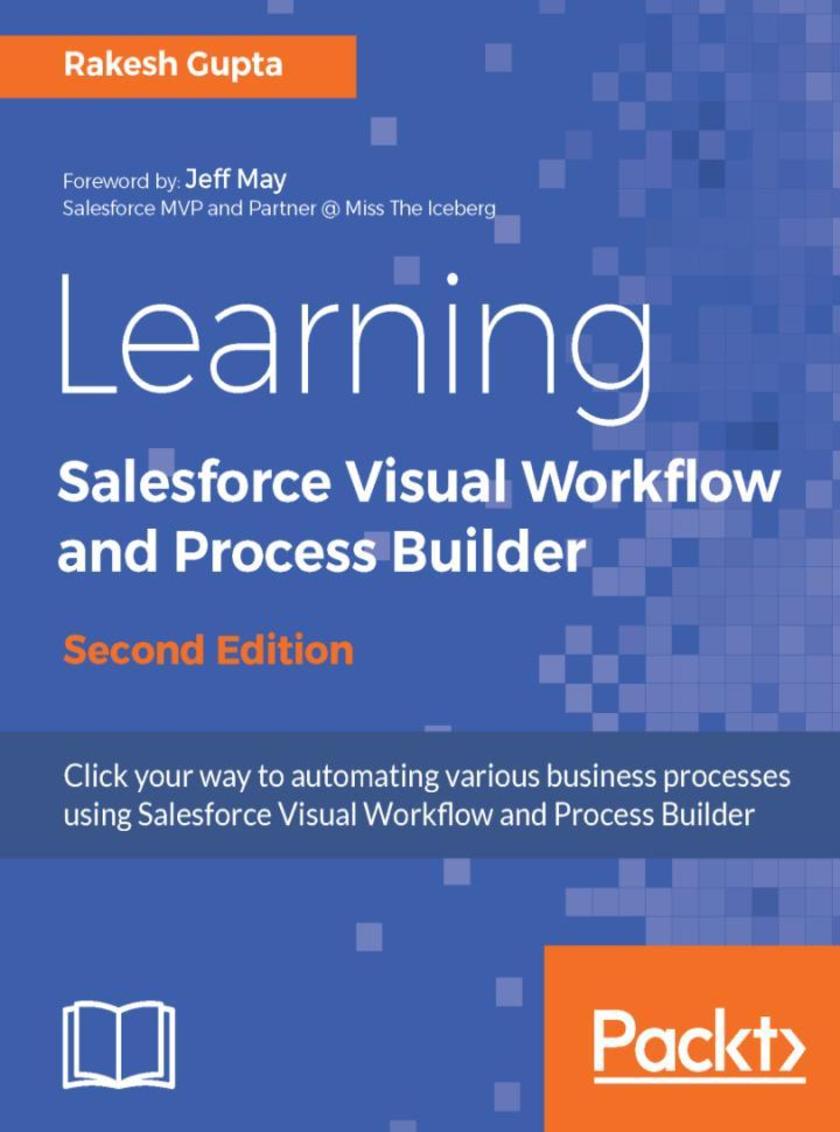
Learning Salesforce Visual Workflow and Process Builder - Second Edition
¥90.46
Click your way to automating various business processes using Salesforce Visual Workflow About This Book ? Develop an application using Point and Click with the help of Flow ? Get to grips with various ways to launch a Flow ? Capture data from an external user without using the Visualforce page ? Save user input into the database, and learn how to query and manipulate the data ? Discover various ways to debug and deploy Flow and Process Builder ? Understand the concepts of Subflow and Login Flow ? Handle complex business processes using Process builder and keep them clean ? Use existing or new Flows to work with Salesforce Lightning Experience. Who This Book Is For This book is intended for those who want to use Flows to automate their business requirements by clicking, not coding. No previous experience in computer coding or programming is required. What You Will Learn ? Develop an application using point and click with the help of Flow ? Get to grips with various ways to launch a Flow ? Capture data from an external user without using the Visualforce page ? Save user input into the database, and learn how to query and manipulate the data ? Discover various ways to debug and deploy Flow and Process Builder ? Understand the concepts of Subflow and Login Flow ? Handle complex business processes using Process builder and keep them clean ? Use existing or new Flows to work with Salesforce Lightning Experience. In Detail Salesforce Management System is an information system used in CRM to automate the business processes like sales and marketing. To implement this, Force.com developed a powerful tool called Visual Workflow to automate business processes by creating applications also called Flows. Learning Salesforce Visual Workflow, Second Edition is a practical guide on Flows that will enable you to develop custom applications in Salesforce with minimized code usage. The book starts with an introduction to Visual Workflows that teaches all the building blocks of creating Flows and use it efficiently. You will learn how to easily automate business processes and tackle complex business scenarios using Flows. The book explains the working of the Process Builder so you can create reusable processes. The book also covers how you can integrate existing or newly created Flows with the Salesforce Lightening Experience. By the end of the book, you will get a clear understanding on how to use Flows and Process Builder in your organization to optimize code usage. Style and approach Step by step approch to use Process Builder to solve complex business requirements with the help of Flow
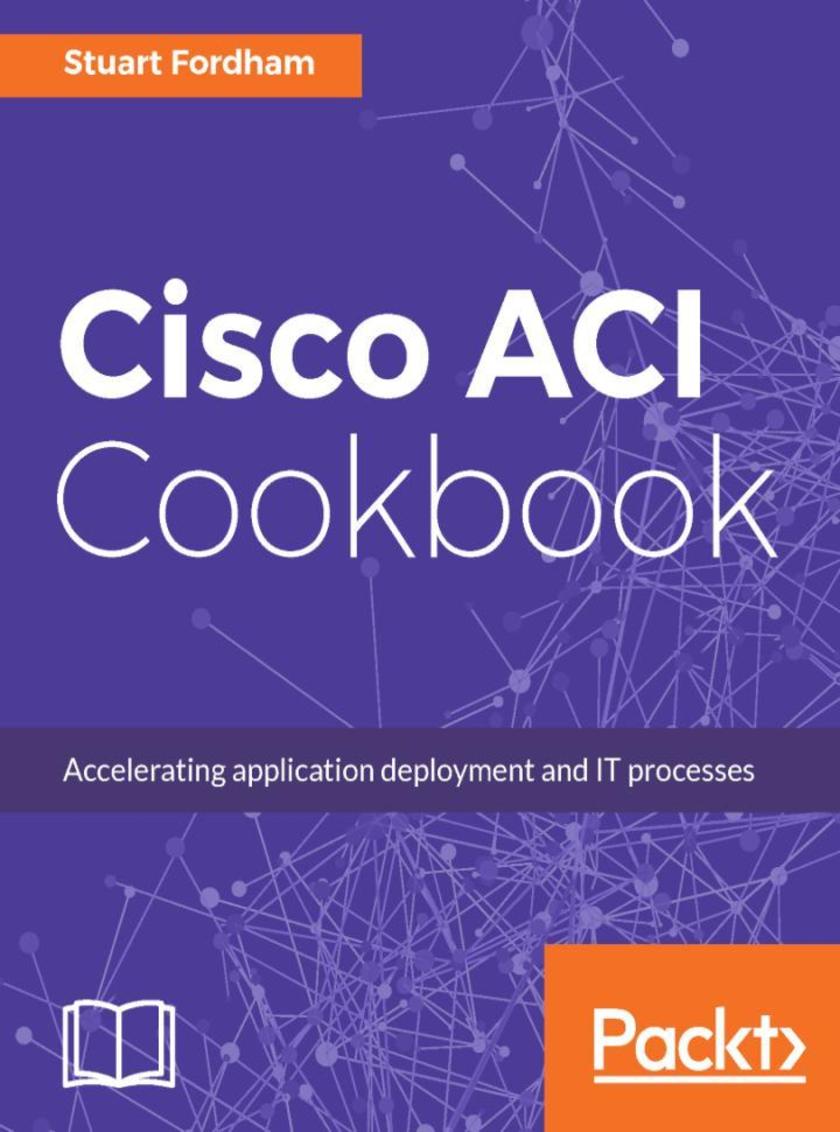
Cisco ACI Cookbook
¥90.46
Over 90 recipes to maximize automated solutions and policy-drive application profiles using Cisco ACI About This Book ? Confidently provision your virtual and physical infrastructure for application deployment ? Integrate Cisco ACI with hypervisors and other third party devices ? Packed with powerful recipes to automate your IT operations Who This Book Is For If you are a network administrator, system administrator, or engineer and are aware of the basics of Cisco ACI but want to start using it to automate your tasks, then this book is for you What You Will Learn ? Master the Cisco ACI architecture ? Discover the ACI fabric with easy-to-follow steps ? Set up quality of service within ACI ? Configure external networks with Cisco ACI ? Integrate with VMware and track VMware virtual machines ? Configure apply and verify access policies ? Extend or migrate a VMware virtual-machine LAN inside the ACI fabric ? Monitor ACI with third party tools and troubleshoot issues In Detail Cisco Application Centric Infrastructure (ACI) is a tough architecture that automates IT tasks and accelerates data-center application deployments. This book focuses on practical recipes to help you quickly build, manage, and customize hybrid environment for your organization using Cisco ACI. You will begin by understanding the Cisco ACI architecture and its major components. You will then configure Cisco ACI policies and tenants. Next you will connect to hypervisors and other third-party devices. Moving on, you will configure routing to external networks and within ACI tenants and also learn to secure ACI through RBAC. Furthermore, you will understand how to set up quality of service and network programming with REST, XML, Python and so on. Finally you will learn to monitor and troubleshoot ACI in the event of any issues that arise. By the end of the book, you will gain have mastered automating your IT tasks and accelerating the deployment of your applications. Style and approach A set of exciting recipes to automate your IT operations related to datacenters, the Cloud, and networking tasks




 购物车
购物车 个人中心
个人中心



